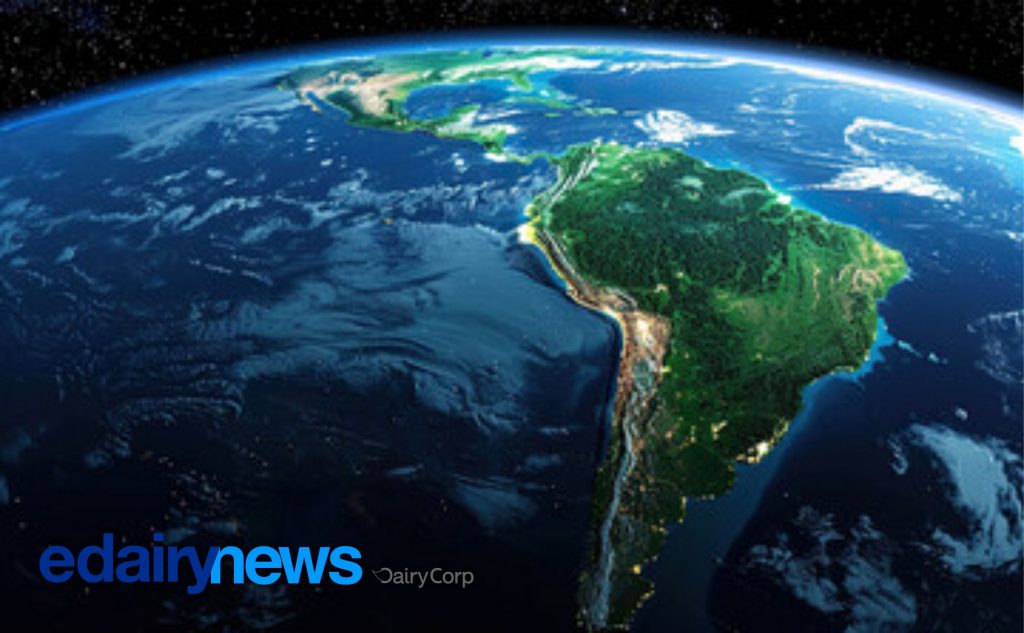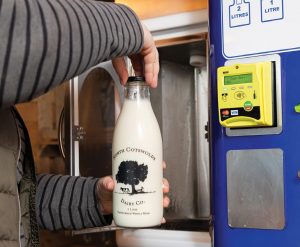
The global dairy market is not only about commodities — it is a geopolitical chessboard in constant motion, where beyond cows, milk and cheese, economic power, food security and policies come into play, capable of shaking entire nations.
In this arena, India and New Zealand represent polar opposites: the former, a colossal producer that consumes everything internally; the latter, a small island that influences international prices through its exports.
The paradox is striking: India produces over 239 million tonnes of milk per year and exports almost nothing; New Zealand, with just 5 million inhabitants and 5 million cows, is the world’s largest dairy exporter.
India: staggering production and insatiable consumption
India has long been the undisputed king of milk production. According to official data from India’s Ministry of Fisheries, Animal Husbandry and Dairying, in the 2023/24 fiscal year production reached 239.2 million tonnes, a 63% increase in just one decade (PIB India, 2025).
The National Dairy Development Board (NDDB) estimates that more than 90% of this production is consumed within its borders.
Consumption is both cultural and massive. Milk is not just an ingredient, but a central part of the daily diet: from chai to paneer, to ghee — a product worth over 3.48 trillion rupees in 2024 and set to double by 2033 (Research and Markets, 2024).
During religious festivals such as Diwali and Holi, demand for butter and ghee soars, destabilising domestic prices.
The problem is that cold-chain infrastructure is limited and post-harvest losses remain high. Therefore, when consumption peaks, India must open the door to occasional imports of skimmed milk powder (SMP) and butter oil.
The USDA (2024) notes that India maintains tariffs of between 30% and 60% on these products, except under tariff quota exemptions. This defensive policy explains why, despite its size, India hardly features in global dairy trade.
What is expanding, however, is the value-added segment: yoghurts, ready-to-drink beverages (lassi, flavoured milks) and functional products.
The yoghurt market, for example, was worth 2.9 billion rupees in 2024 and will reach 14.7 billion by 2033, with annual growth of 19.7% (IMARC, 2025). The urban, young, digital middle class seeks convenience and quick nutrition: the ready-to-drink boom is proof of this.
New Zealand: the thermometer of the international market
If India is the production powerhouse, New Zealand is the export thermometer. What happens on its dairy farms resonates in Shanghai, Cairo and São Paulo.
For the 2025/26 season, Fonterra projects 1.49 billion kilos of milk solids (kgMS), similar to the previous season (Fonterra, 2025).
Weather is always a risk factor: heavy July rains cast doubt on early production, but spring’s start will set the pace.
The world reference point is the Global Dairy Trade (GDT). In the August 2025 event, the price index rose 0.7% compared to the previous auction (GDT, 2025).
It may seem minor, but these small fluctuations define the income of thousands of farmers in the southern hemisphere and the cost for importers in Africa and Asia.
New Zealand exports more than 95% of its production, mainly to China, Southeast Asia and the Middle East. This level of exposure makes it vulnerable to geopolitical and regulatory shifts.
Here lies the major tension: sustainability. In 2024, Christopher Luxon’s government decided to cancel the agricultural emissions tax, known as the “burp tax”, which targeted methane emissions from cows and sheep (Reuters, 2024).
While celebrated by farmers, it drew international criticism for undermining the country’s “clean & green” image. Agriculture accounts for more than half of New Zealand’s emissions (DairyNZ, 2025).
And even if domestic policies are eased, global buyers — especially Europeans — will continue to press for stricter environmental standards.
Clashes and convergences
India and New Zealand watch each other closely. The former is a potential import giant; the latter, a global-scale supplier. But not everything is complementary.
India seeks to export ghee and value-added derivatives to niche markets — from Hindu diaspora communities to Middle Eastern consumers — while New Zealand defends its dominance in skimmed milk powder, the base of most international contracts.
Politics also plays a role: India shields its small farmers with high tariffs, while New Zealand depends on keeping markets open through free trade agreements.
In practice, India influences the market with its abstinence (when it does not buy, global prices suffer), and New Zealand with its abundance (when it increases production, it floods the market).
Trends and scenarios 2025–2030
The next five years will be decisive:
Asian demand: The Indian and Southeast Asian middle classes will drive dairy demand beyond what New Zealand alone can supply.
Mandatory sustainability: Even if Wellington loosens up, buyers will demand verified carbon footprints. If New Zealand does not adapt, it risks losing competitiveness to emerging countries with laxer regulations.
Indian value-added: With a huge domestic market and growing infrastructure investment, India could begin exporting more premium derivatives, ceasing to be merely a net consumer.
Model clash: India, with millions of small farmers protected by public policies; New Zealand, with highly efficient systems geared to global trade. Tension is inevitable, but it may also open doors to cooperation.
The future of the global dairy market is not decided in Brussels or Washington. It is decided in the villages of Gujarat and the green pastures of Waikato.
India, with its internal voracity and protectionist policy, can tilt the trade balance without selling a drop abroad. New Zealand, with its export efficiency and exposure to climate and geopolitics, is the beacon that sets prices and expectations.
Two opposing models, two extreme realities, yet the same chessboard. Within that tension — between Indian domestic consumption and New Zealand’s exports — lies nothing less than the compass of the global dairy market.
Valeria Hamann
EDAIRYNEWS
📌 With information from India’s Ministry of Fisheries, Animal Husbandry and Dairying (PIB, 2025), National Dairy Development Board (NDDB), USDA FAS (2024), Research and Markets (2024), IMARC Group (2025), Fonterra (2025), Global Dairy Trade (2025), DairyNZ (2025) and Reuters (2024).
